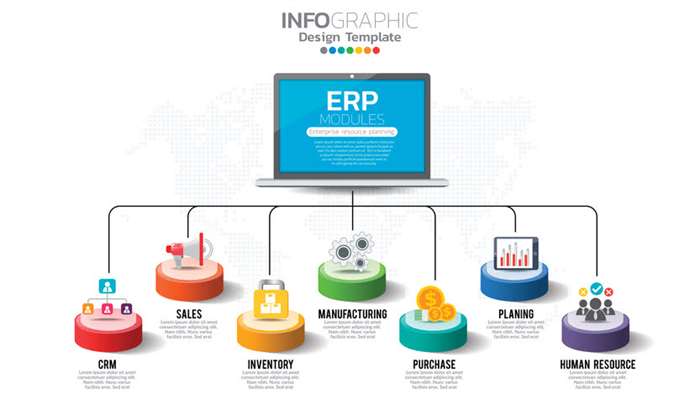Hence, to implement value-based pricing into a company, the company has to understand its objective and the advantages that stand out among the competitors in the same field. Thus, this will provide a benefit of dominating the targeted market for the company, hence, sustaining the segmented customers that the company is targeting. The University of Texas at Austin’s Dell Medical School (DMS) offers an example of how education about value-based health care can be incorporated into undergraduate medical education. Throughout the 4 years of medical school, DMS students study the principles of value-based care delivery described above.
The strategy tends to involve products that possess a certain level of prestige in ownership or are completely unique. Are you interested in learning more about value-based pricing and other key frameworks? Explore our seven-week Business Strategy course, and other online strategy courses, to learn more about how to develop effective pricing strategies. Of the four strategies outlined above, numbers two and four allow firms the opportunity to increase the value for all parties. This enables them to maximize profits without negatively impacting others. Business strategies one and three, on the other hand, allow firms to maximize profits at the expense of customers and suppliers, growing their own value while shrinking others’.
Are we missing a good definition for value-based? Don’t keep it to yourself…
Select the Return FTE Rate check box to instruct the rate definition process to return a part-time
value by applying an employee’s FTE to the rate value. If you select the Value by Criteria category to define
a rate, you must select a Value by Criteria name. A value by criteria
definition specifies one or more evaluation conditions that determine
a particular value or rate. Rate definitions with this option selected are included
when the Generate HCM Rates batch process is run. If each set of employees receives an allowance that’s
a percentage of the base rate, define one allowance rate. And that
rate is calculated based on the two rates that have the Base Rate option selected.

If you want to leverage the method successfully, be sure to lead with empathy, consider your prospect’s needs holistically, listen actively, and take on an advisory role in the process. If you can nail those key elements, you’ll see the results you want from your value selling efforts. The rep would let the prospect know that their company’s software could give the chain some extra oomph to expand more effectively — relative to its industry peers. Here, the rep might try to value sell based on differentiation by speaking to how the prospect’s direct competitors that aren’t leveraging construction management platforms are consistently running into delays and conducting inefficient builds. That’s why pushing a differentiation-oriented angle while value selling is one of the more effective roads you can take. If you can give hard figures or reference points for how much revenue your prospect can expect to generate with your offering or how it can reign in operating costs, you can frame a compelling, more concrete value proposition for them.
Changes to the Nutrition Facts Label
Share fresh ideas and strategies that can help your prospect improve their own competitive positioning avoiding the temptation to tell the prospect what to do. Since the introduction of value-based health care in 2004, there has been an explosion of information and ideas about value-based health care. Here we publish links to major value oriented organizations in health care. Stay competitive by adopting a strategic approach, restructuring the delivery of care, and measuring costs and outcomes to increase patient value. The value-based pricing principle mainly applies to markets in which possessing an item enhances a customer’s self-image or facilitates unparalleled life experiences. To that end, this perceived value reflects the worth of an item that consumers are willing to assign to it, and consequently directly affects the price that the consumer ultimately pays.
- In order to be certified to take USMLE Step 1, students are required to pass all basic sciences courses.
- The value-based health care team is led by Professor Michael E. Porter and is based in the Institute for Strategy and Competitiveness at Harvard Business School.
- The value-based pricing principle mainly applies to markets in which possessing an item enhances a customer’s self-image or facilitates unparalleled life experiences.
- Here, the process uses the value for the first
record created and carries that value forward in subsequent records,
unless it’s manually overridden. - Planning, target setting, performance measurement, and incentive systems are working effectively when the communication that surrounds them is tightly linked to value creation.
Experts believe transparency will be crucial toward the efforts to slow the growth of health care spending. By focusing on the outcomes that matter most to patients, value aligns care with how patients experience their health. manufacturing based definition of quality In this context, health outcomes can be described in terms of capability, comfort, and calm.4
Capability is the ability of patients to do the things that define them as individuals and enable them to be themselves.
What Is Value-Based Care? Explaining This Patient-Centered System
In contract negotiations with payors, surgeons and other providers negotiate a price for specific services delivered to patients. In this context, price represents the sum of what is estimated to be the actual cost accrued in the provision of the care, plus some reasonable profit margin. Value-based selling is an approach that focuses on benefitting the customer throughout the sales process. Sales reps focus on taking a consultative approach to provide value to the customer so the sales decision is made based on the potential value the product can provide. Becoming more cost-effective and providing better results sounds like a win-win for providers and patients. And if not done right, value-based care yields high risks to providers and health care facilities.

A potential pitfall of value-based care is that high-risk patients could be turned away. Similar to actuarially based insurance, doctors would need to outweigh a high-risk patient with enough healthy ones, Dr. Jorgensen explains. The good news is that because people are asking questions about corporations’ social impact, multiple companies and fund managers are responding. Many now publish a Corporate Responsibility Report, which is just another $20 phrase that means companies are self-reporting on their efforts to have a positive impact on the environment, social causes and culture overall. The company must also have open communication channels and strong relationships with its customers.
Trez Capital
Value in health care is the measured improvement in a person’s health outcomes for the cost of achieving that improvement. While some descriptions conflate value-based health care and cost reduction, quality improvement, or patient satisfaction, those efforts—while important—are not the same as value, which focuses primarily on improving patient health outcomes. An interdisciplinary team of caregivers then comes together to design and deliver comprehensive solutions to address those needs. The team measures the health outcomes and costs of its care for each patient and uses that information to drive ongoing improvements. Care provided in this way aligns delivery with how patients experience their health and reconnects clinicians to their purpose as healers.
With cost-plus pricing or competition-based pricing, a price can be decided relatively easily by evaluating costs or the competitor’s prices. The value-based pricing strategy involves guesswork and is more qualitative in nature. Measuring health outcomes is not as complex as it is often perceived to be. Routine clinical practice does not dictate, nor can it support, the voluminous health outcome measure sets used in clinical research. Instead, clinicians need to focus on measuring the outcomes that define health for their patients.
What are 2 types of value-based pricing?
We would welcome your ideas for research and from time to time have openings on our team at HBS. In my 15-plus years of working with companies & teaching courses on pricing strategies to MBA students, I have found value-based pricing (also known as “value pricing”) to be the most commonly discussed concept that’s also the most misunderstood one. It creates more confusion among marketers, even many pricing experts, than any other pricing concept. What is more, these misconceptions often lead companies to shy away from using it, instead settling for cost-based or other pricing methods that leave money on the table. Value-based pricing can allow a seller to increase the price of an item to the highest level that customers will be willing to pay. It can also help to drive innovations in future products based on greater knowledge of the features that customers value the most.

Thus, value–based pricing companies are aiming for types of segmentation like value buyers. In reality, each and every product in the market is sold at different prices, for more or less similar products. However, selling the same product at different prices is often illegal, because it is regarded as price discrimination or treated as unfair.
U.S. Food and Drug Administration
They must be sufficiently detailed to be tied to the everyday operating decisions that managers have under their control. The first principle in compensation design is that it should provide the incentive to create value at all levels within an organization. Compensation for the chief executive officer—though a popular topic in the press—is something of a red herring. Managers’ performance should be evaluated by a combination of metrics that reflects their organizational responsibilities and control over resources (Exhibit 6). What is important is that these key value drivers, although only a small part of the total business system, have a significant impact on value, are measurable from month to month, and are clearly under the control of line management.
As examples, consider bluntly applied cost control efforts that ignore quality or only place a cursory emphasis on quality, such as the early health maintenance organizations (HMOs) and Medicare’s sustainable growth rate. In large part, these efforts failed because they either created incentives to limit care (even advisable or necessary care in some cases), or they simply reduced the price paid for services without regard to quality. These efforts only incentivized physicians and other providers of health care services to increase the volume of goods and services provided to maintain revenue.
“This is the classic paradigm that people find wrong with the current system,” Dr. Jorgensen says. Despite all the barriers to adopting a value-based care system, many in the health care industry still see it as the optimal way to provide care for patients. Additionally, some areas of health care need further advancement before value-based care can fully take hold. A value-based care system would rely on this information in order to evaluate services and billing. “Value-based care has great promise,” says Dr. Doug Jorgensen, CEO of Patient360. We are interested in working with those individuals and organizations with a goal of improving health care using a value-based approach.
